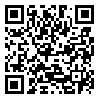قابل توجه نویسندگان محترم، مقالاتی که از تاریخ 1404/07/13 برای نشریه ارسال می شوند، شامل پرداخت هزینه بررسی نخواهند شد.
year 11, Issue 1 (2025)
JRA 2025, 11(1): 0-0 |
Back to browse issues page
Download citation:
BibTeX | RIS | EndNote | Medlars | ProCite | Reference Manager | RefWorks
Send citation to:



BibTeX | RIS | EndNote | Medlars | ProCite | Reference Manager | RefWorks
Send citation to:
Razani M, Rajabi N. (2025). Sampling for Historical-Cultural Artifacts in Iran: Challenges and Solutions. JRA. 11(1), doi:10.61186/jra.11.1.455
URL: http://jra-tabriziau.ir/article-1-455-en.html
URL: http://jra-tabriziau.ir/article-1-455-en.html
1- Faculty of Applied Arts, Tabriz Islamic Art University, Tabriz, Iran , m.razani@tabriziau.ac.ir
2- Independent Researcher in Field of Archaeology, Tehran, Iran
2- Independent Researcher in Field of Archaeology, Tehran, Iran
Abstract: (945 Views)
Scientific and field-laboratory research in the domain of historical and cultural artifacts confronts a multitude of challenges, including the neglect of laboratory sciences as a priority in policy-making and executive programs; the absence or inadequacy of suitable and efficient laboratory equipment and facilities; the failure to allocate sufficient financial resources for laboratory-based research; and the lack or weakness of regulations to systematize sampling from historical objects and artifacts. Sampling constitutes the foundation of numerous laboratory researches grounded in heritage, which, beyond scientific protocols, necessitates a clear and defined framework of legal regulations—a framework that adheres to domestic legal requirements and considerations, particularly in the issuance of permits for sampling from historical objects and fabrics.The process of sampling and conducting analyses on samples from historical artifacts, especially in archaeometry, is profoundly influenced by political and security constraints. These limitations have rendered access to advanced methodologies and technologies for cultural and historical research exceedingly difficult, while, on the other hand, the exigency to undertake such investigations abroad has exacerbated Iran's dependency on foreign institutions. In circumstances where fluctuations in political relations with advanced nations (predominantly Western) impede effective measures in laboratory activities—such as the importation of equipment, the establishment of comprehensive and sophisticated laboratories, or the dispatch of samples to reference laboratories abroad—at minimum, emphasis can be placed on the formulation of laws and guidelines that facilitate and systematize the domestic sampling process. This approach propels research endeavors with minimal administrative and technical impediments, insulated from individual predilections and subjective perspectives. Such a measure can serve as an invaluable instrument for administrators and scholars in justifying the imperative of laboratory research within the realm of cultural heritage, averting administrative and scholarly disarray, and ultimately furnishing a conducive milieu for autonomous scientific advancements in archaeological sciences and enhanced preservation of Iran's cultural heritage.
Technical Note: Original Research |
Subject:
Archaeometry
Received: 2025/02/22 | Accepted: 2025/04/7 | Published: 2025/09/21 | ePublished: 2025/09/21
Received: 2025/02/22 | Accepted: 2025/04/7 | Published: 2025/09/21 | ePublished: 2025/09/21
| Rights and permissions | |
 |
This work is licensed under a Creative Commons Attribution-NonCommercial 4.0 International License. |






